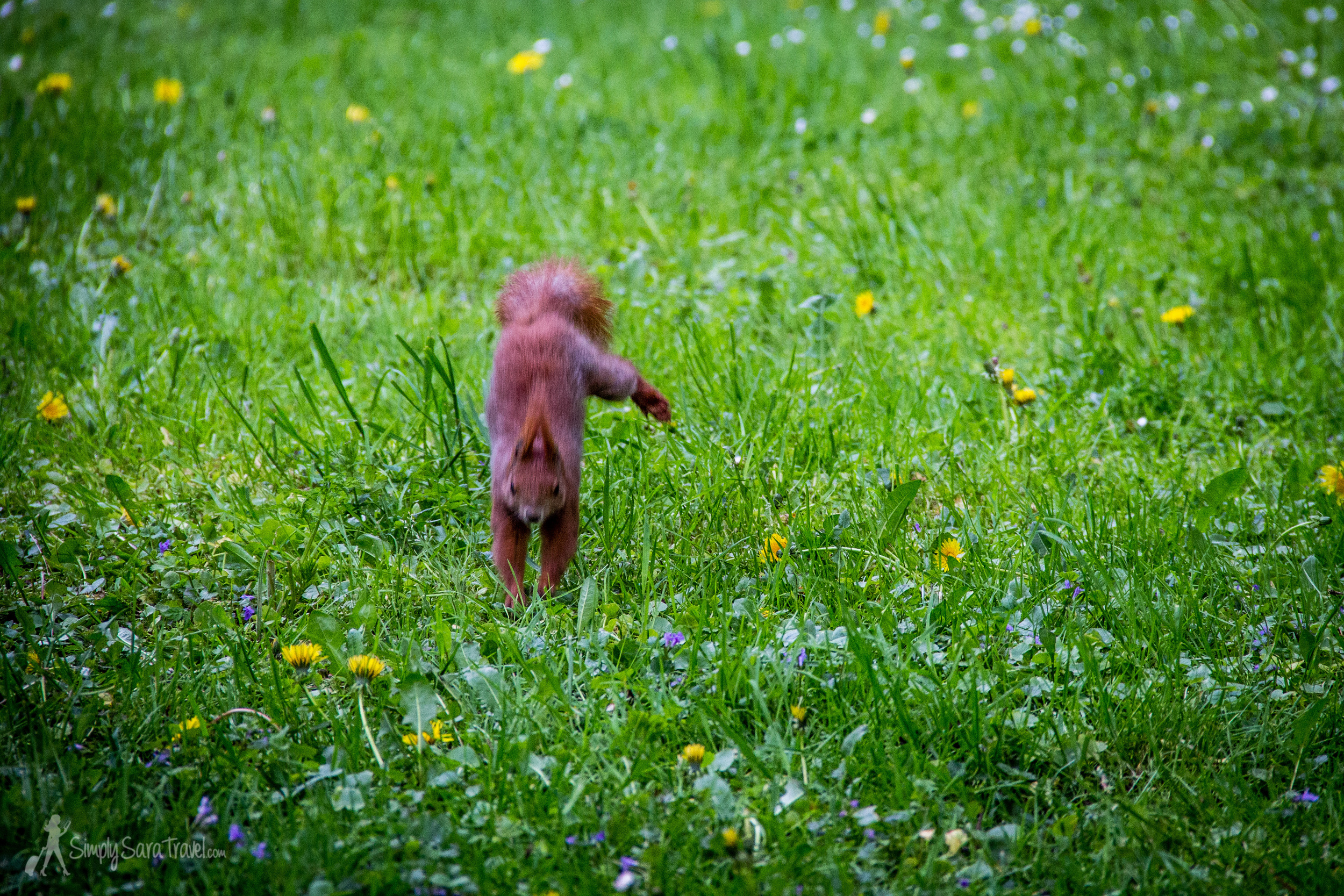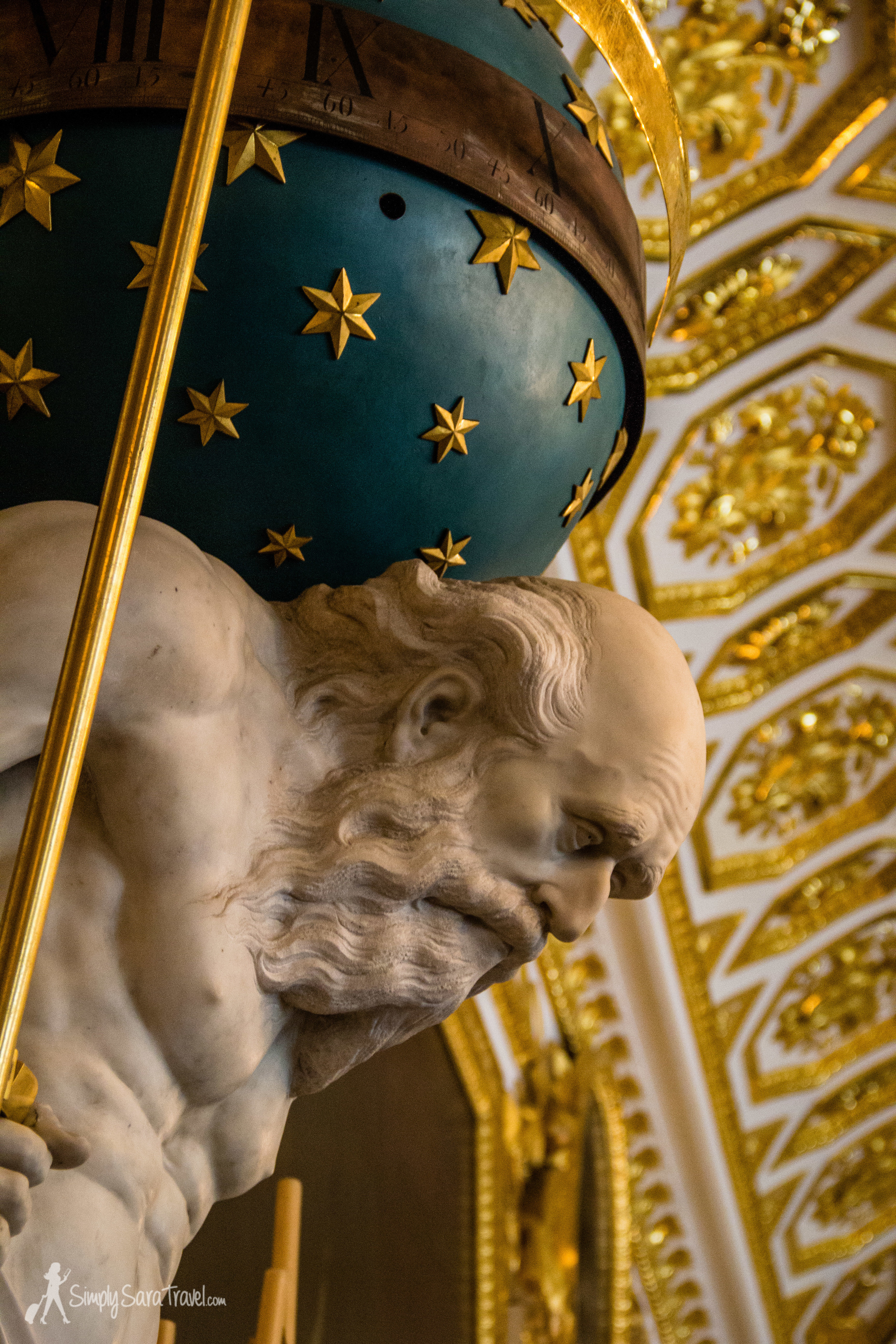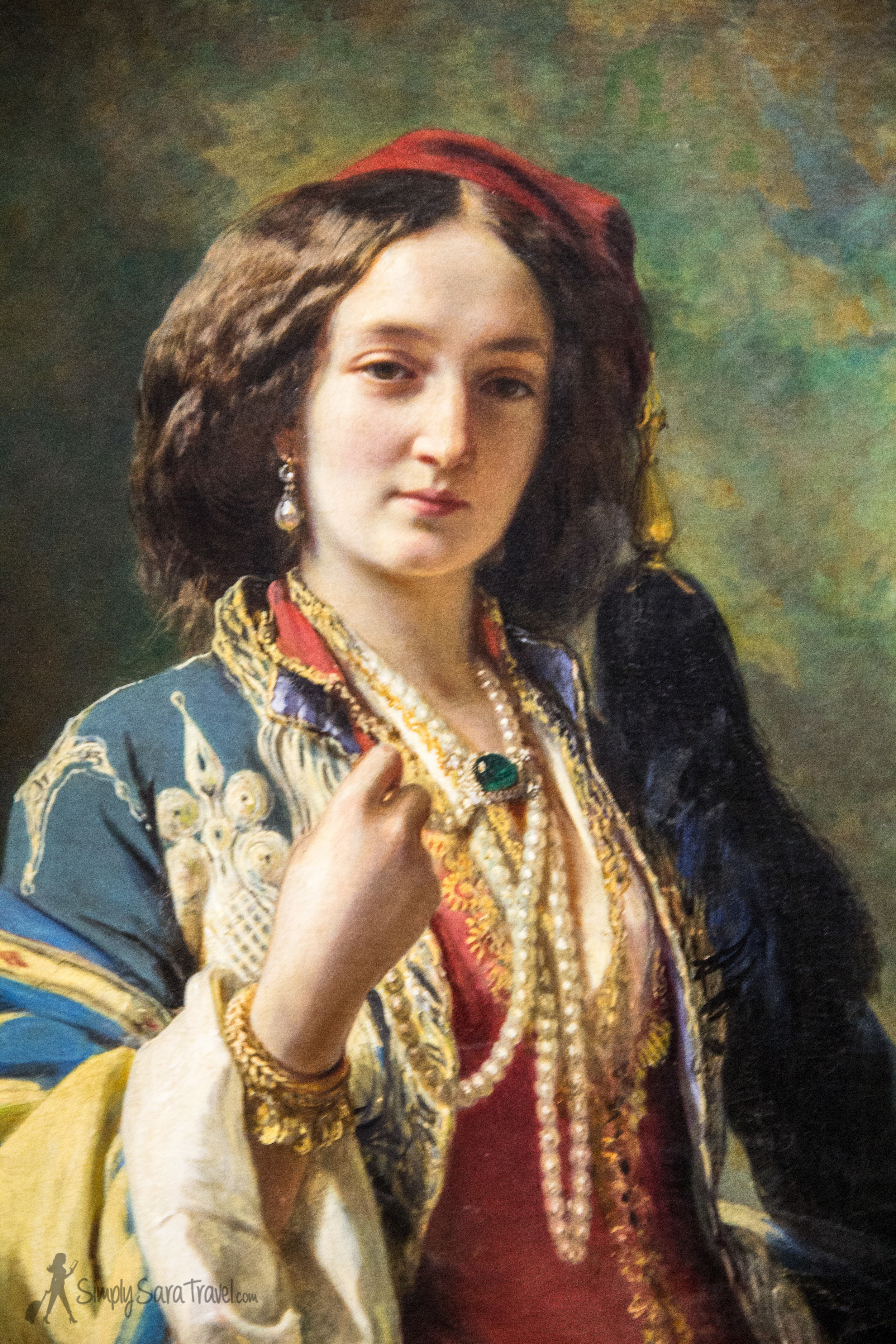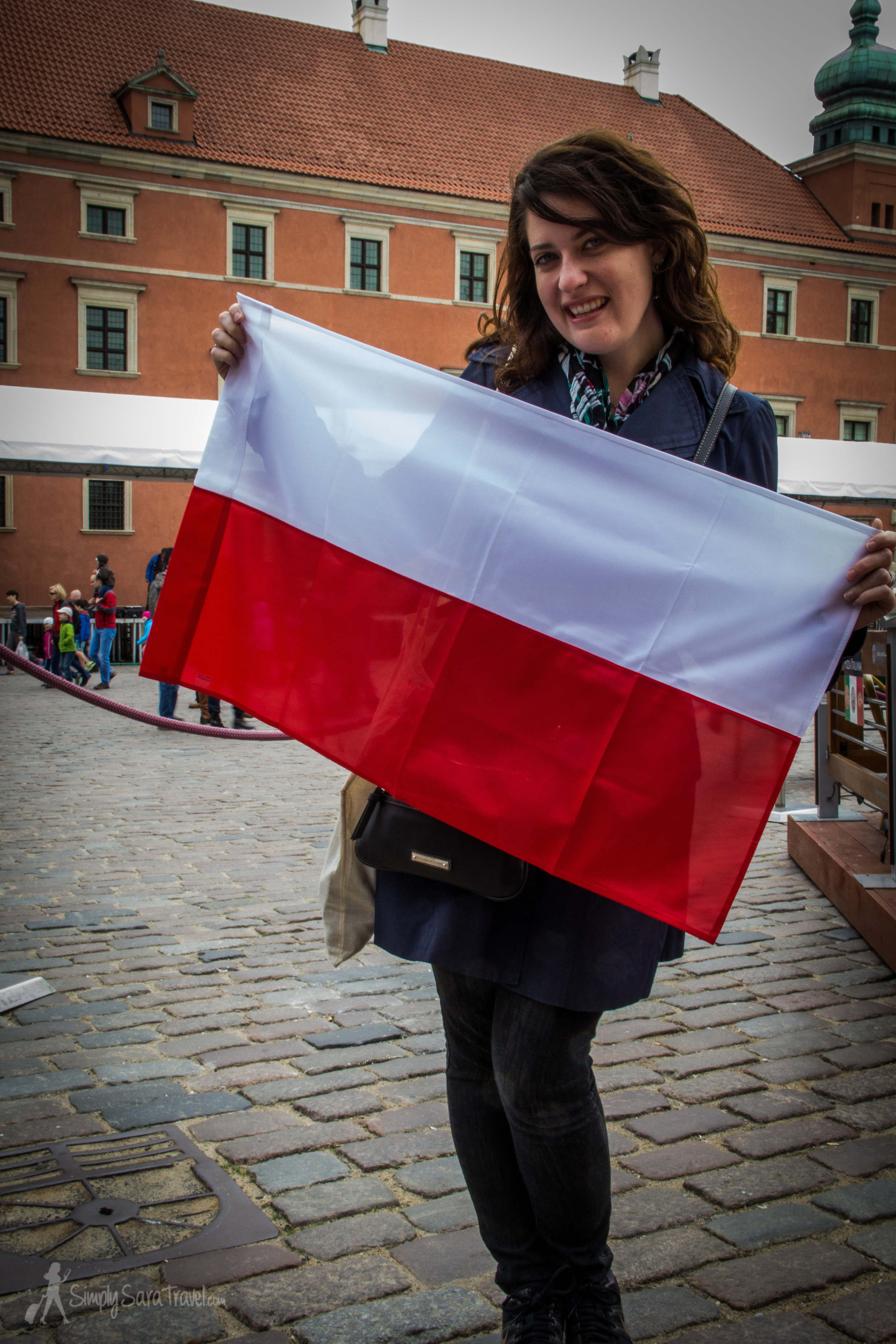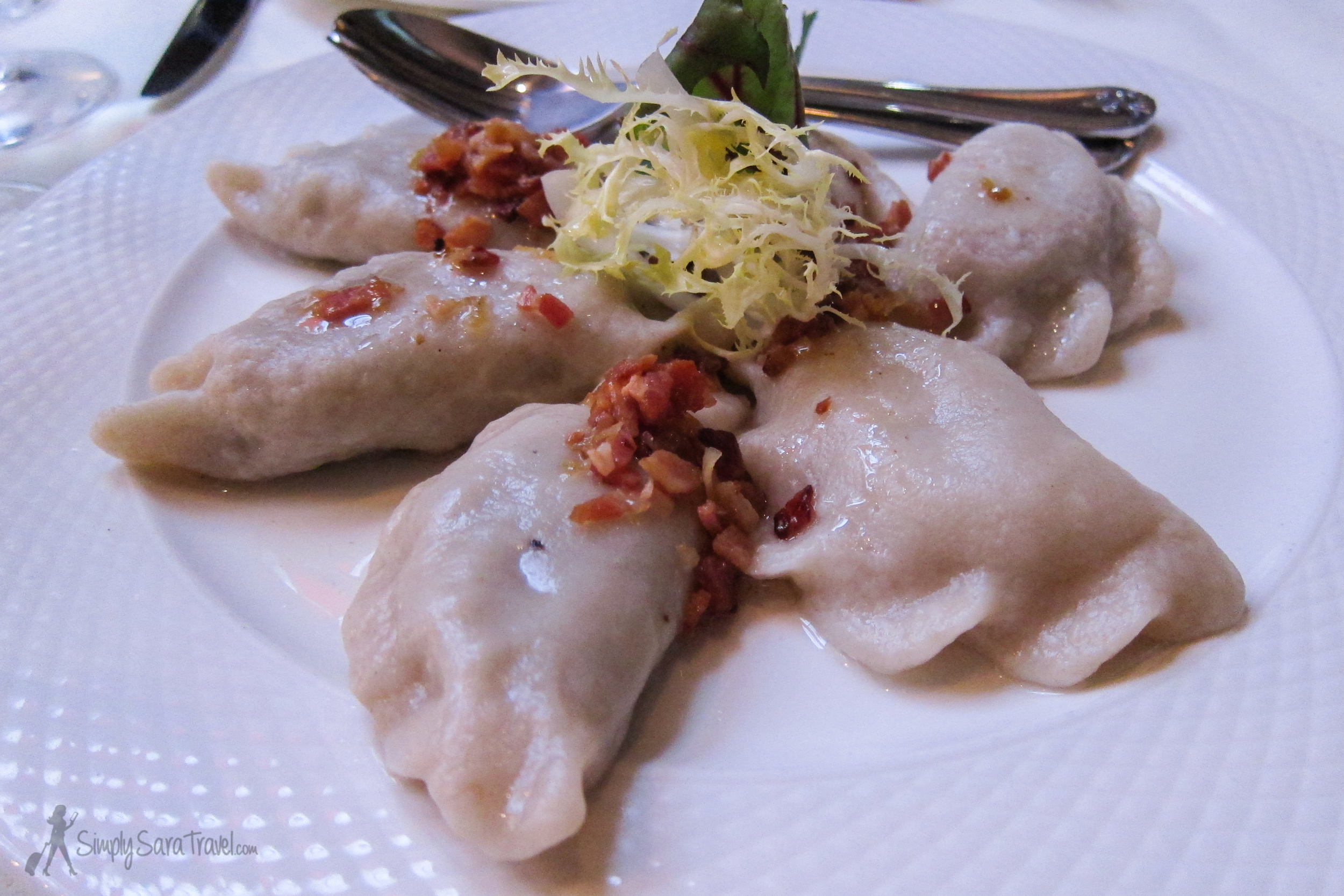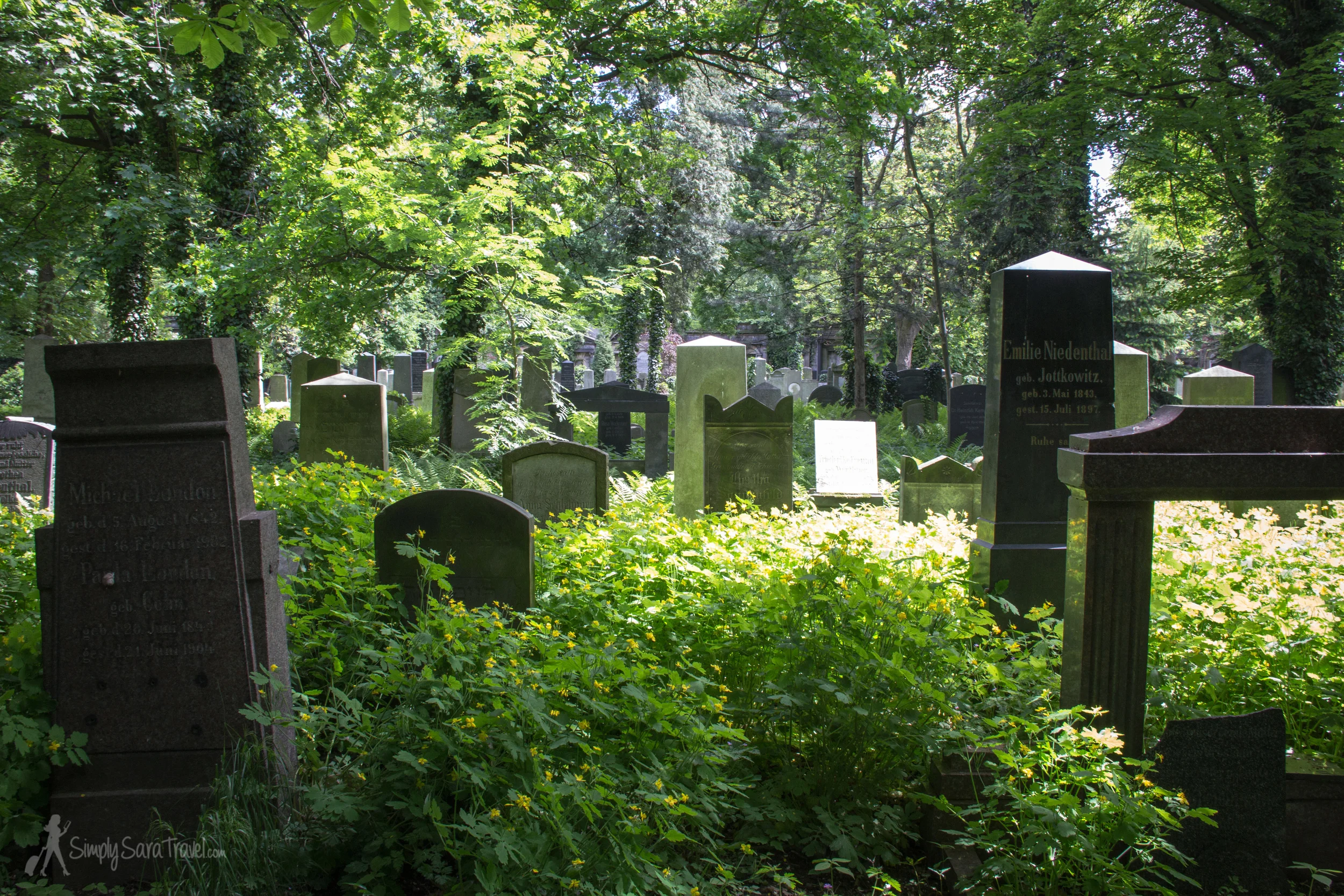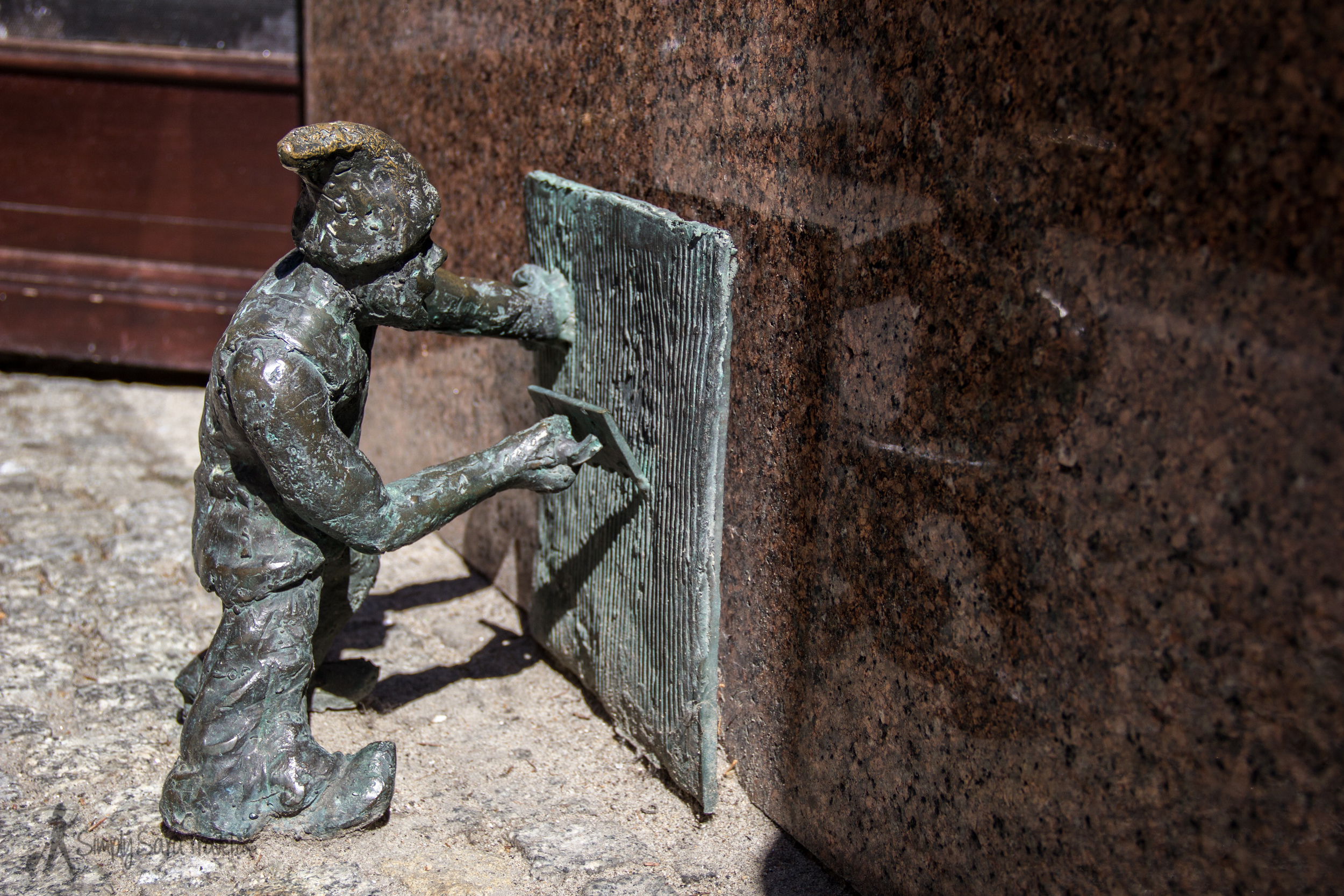Warsaw. I knew I couldn’t plan a trip around Poland without hitting the capital city. Yet as I mentioned before, it seemed to be unpopular with a majority of tourists who didn’t like its modern feel. In fact, it seemed to be unpopular with some of the Poles as well. On our last night in Krakow, upon hearing what our next destination was, our bartender proclaimed Warsaw to be “the most hated city in Poland.” And further elaborated that it was a place where “the uneducated live like kings.” So with that last vote of confidence, we left picture-perfect Krakow to see what Warsaw had in store for us.
At first look, I could see why there’s a lack of love for Warsaw. It was modern and shiny, busy and bustling, befitting of an international capital. Many of its visitors whether Polish or otherwise come for business. Those who come for pleasure seem to dismiss it in favor of smaller, more manageable cities.
The Palace of Culture and Science, Warsaw
What I started to learn though, is despite feeling new, Warsaw has history stamped all over it. Take this monumental building for example - the Palace of Culture and Science (Pałac Kultury i Nauki). It’s the tallest building in Poland, and certainly dominates the city skyline. It was constructed on behalf of Stalin as a gift to the city. It’s a reminder of Soviet rule over Poland, and still is perceived negatively by many. (Wikipedia cites the Polish word for stick, “patyk,” as one of its nicknames, but Rick Steves doesn’t sugar coat it - just run with that imagine and associate it with a certain body part of Stalin’s. Get an idea of how the people feel about it?)
You can pop up to the 30th floor's observation deck, though as we discovered, the view isn't noteworthy. The Palace of Culture and Science itself is one of the skyline's highlights, so it doesn't help when you're looking out from this building at the rest of Warsaw.
The view from the Palace of Culture and Science
But before we can even think of the hard times under communist rule, we need to go back a little further in time. Imagine that that huge skyscraper could easily be inserted into the city because the city had to be rebuilt. Entirely. From the pile of rubble Warsaw was reduced to after WWII.
We went to the Warsaw Uprising Museum to educate ourselves on this event during WWII and how it shaped the city Warsaw is today. (And admittedly needed to use Google to help fill in the basic facts of the uprising. There was lots of information yet it was presented in such a confusing manner, and seemed to assume that the basics of the story were a given to its audience.) We had the option of adding on a viewing of the film “City of Ruins” for 2 pln each, and considering that’s about $1 total, we went for it. I’ll sum up the film for you - it’s an aerial pan of Warsaw completely devastated and in shambles.
That’s because Warsaw was utterly destroyed during WWII. Here’s the short story - it was 1944 and the Russian army was advancing towards Warsaw in the east. The Nazis of course were in control of Poland, and if the Red Army was to liberate the city, it would come at a high price: Freedom. So the Polish Underground Home Army gathered together to rally against their oppressors and liberate the Polish people. They surprised the Nazis with their attack and fought so fiercely that the scuffle lasted for 63 days.
Please note the “scuffle” in reality was gruesome fighting. With a population over 1 million, the city lost 200,000 civilians during this time. (And remember what had happened to the large Jewish population before this. They either were exterminated in death camps or died in the largest Jewish revolt during the war, the 1943 Warsaw Ghetto Uprising.) The city was a war zone, and people had to use the sewer pipes to travel around the city somewhat safely. Until the Nazis did things like throw bombs into the pipes. Or show up at the hospital and shoot everyone - the injured, nurses doctors, everyone. Warsaw was shown no mercy.
Hitler was pissed off by the audacity of the people of Warsaw, so when things died down a bit, he ordered that the city be destroyed. With typical Nazi precision, Warsaw was systematically bombed and reduced to rubble, street by street. Note that this whole time, the Russians were nearby just watching. Once the city was forced into submission, they rolled in and took over. And they had a clean slate to work with and rebuild, communist-style.
Sorry for the little history lesson, but it’s one that I didn’t hear in school. I feel like I got an overview with the highlights of the Holocaust and D-Day, but never was taught the plight of Poland beyond its Jewish population’s demise. So learning the relatively recent history of Warsaw gave me a new perspective. I was in a city that had been scarred deeply, but not destroyed beyond repair. A city that almost didn’t get rebuilt as Poland’s capital but did reclaim its status in the end. A city full of perseverance and hope in the face of incredible odds.
And it’s a city full of fun today. It has this tragic past, yet it is a vibrant place to visit today. Take the Museum of Modern Art - this wonderful (and free) museum was full of creativity and imagination.
Snowmen can be art, right?? At Warsaw's Museum of Modern Art...
Or the Copernicus Science Center. Usually I tag along to science museums for Michael (and he’s a trooper in some of my art and history museums). But this new science center that opened in 2010 was amazing! It was tons of fun, and its hands-on exhibits totally engaged me. The best was Re: Generation, the age 14+ section, full of experiments in psychology, sociology, and other topics. Coming from some science museums where I’ve just sat on a bench reading on my Kindle, it says a lot that this is one I would go back to in a heartbeat.
I built this bridge with (minimal) help from Michael! And this was before we got to the Re: Generation (ages 14+) section of the Copernicus Science Center.
This camera detected facial features and determined the mood of the person. This was Michael doing his "Paris Metro face," trying to max it out as 100% sad. His depressed Parisian look did manage to reach that goal, though not pictured here!
Then there’s the pretty Łazienki Park, a local favorite. We loved relaxing and just observing the animals we came across on our afternoon walk.
Ok, you seriously have to scroll through and see this crazy squirrel sequence. I'm convinced this fearless little guy is half ninja...perhaps another badass Varsovian?
While I did mention the severity with which Warsaw was destroyed, it has been since rebuilt and reconstructed in areas. The fate of the Royal Castle was ambivalent for years after WWII - communist authorities didn’t decide to rebuild the castle until 1971. It opened its doors again in 1984, and even though the building itself has been reconstructed, much of the interior furniture and objects are originals that had been hidden during the war.
Inside the Royal Castle in Warsaw
Just look how beautifully the Royal Castle shines today! It’s my favorite castle I visited in Poland, given it’s more than sufficient in the gold and glitz department. (Thanks to my Grammy for the lesson that “if it don’t have bling, it don’t mean a thing.”) The Royal Castle certainly regained its splendor and majesty.
The last place I should give a shout-out to is the National Museum in Warsaw (Muzeum Narodowe). While I enjoy art museums, this one has a special place in my heart. Let me back up a minute though.
When we traveled to Prague, Michael had an ah-ha! moment while walking around. We both are mutts of many different nationalities, and part of Michael’s heritage is Czech. As we walked around Prague, suddenly Michael turned to me. “I look like them!,” he exclaimed. And sure enough, during our time there on more than one occasion someone came up to him and starting speaking Czech. Even though we looked like tourists and were in touristy places, he had the Czech facial features. I thought that given the considerable percentage of Polish in my blood, I would have the same experience in Poland. But each city, I would turn to Michael and sadly say, “I don’t think I look like anyone here.”
Until Michael spotted this painting in Warsaw’s Muzeum Narodowe. A Polish girl (of royalty, no less) kind of looked similar to me! So I can say that this museum reaffirmed my Polish roots. Come on, do you see it?
Warsaw's Old Town may be rebuilt, but it's as charming as ever!
This is the Mermaid of Warsaw, the city's protector, as commemorated in the Old Town Square. To me, this reminds me of the spirit of the Varsovians. No mermaid fought their battles - they have endured great hardships and have persevered. And the future is bright for this city.
Given all that, it turns out that Warsaw is a wonderful city to visit! Recently as I reflected upon all the places we went to in Poland, I thought about which city I would most want to revisit. I initially thought that the answer would be easy to arrive at - of course there would be no contest to my beloved Krakow. But practically thinking it through, I realized that I really have seen most of Krakow and its attractions. Yet there is so much more to discover in Warsaw. We didn’t even make it down to the Mokotów neighborhood, home to a list of recommended restaurants and bars I got from a local friend. Plus the Museum of the History of Polish Jews that I really wanted to see wasn’t open yet in May of 2014 but is now. So without a doubt, Warsaw is the destination I would most want to visit again in Poland.
Warsaw, as seen from the balcony of our Airbnb apartment rental
What do you think? Have you been or are you interested in ever visiting?
PLAN YOUR TRIP:
Stop:
See my post, Simply Sara Eats: in Warsaw, for my food and drink recommendations!
Go:
Warsaw Uprising Museum
Grzybowska 79, 00-844 Warsaw, Poland
Closed on Tuesday, Open Mon/Wed/Fri 8am-6pm, Thurs 10am-8pm, Sat/Sun 10am-6pm
Admission: Adults 14 pln, Reduced rate 10 pln, viewing of the “City of Ruins” film for an additional 2 pln (prices as of February 2015)
Free admission on Sunday
Museum of Modern Art (Muzeum Sztuki Nowoczesnej)
ul. Pańska 3, 00-124 Warsaw, Poland
Closed on Monday, Open from Tuesday-Sunday 12pm-8pm
Free admission
Copernicus Science Centre
Wybrzeże Kościuszkowskie 20, 00-390 Warsaw, Poland
Closed on Mondays, Open: January - April Tues-Fri 9am-6pm, Sat & Sun 10am-7pm / May and June Tues-Fri 8am-6pm, Sat & Sun 10am-7pm / July and August Tues-Sun 9am-7pm
See website for special times or closures on holidays
Admission: Standard ticket is 25 pln, Half price ticket is 16 pln (for children ages 2-19, college students under 26 years old, seniors over 65 years old - ID required for later two categories) (prices as of February 2015)
The Royal Castle
Plac Zamkowy 4, 00-277 Warsaw, Poland
Open daily: Winter season (October 1st 2014 - April 30th 2015) Tuesday - Saturday 10am-4pm, Sunday 11am-4pm / Summer season (May - September 2015): Monday - Wednesday, Friday, Saturday 10am-6pm, Thursday 10am-8pm, Sunday 11am-6pm
Admission: Regular price 22 pln, reduced rate 15 pln, Children up to 16 years old 1 pln (prices as of February 2015)
Free admission on Sundays
The National Museum in Warsaw (Muzeum Narodowe)
Al. Jerozolimskie 3, 00-495 Warsaw, Poland
Closed Monday, Open Tuesday-Sunday from 10am-6pm, late opening on Thursday until 9pm
Admission: Adults 15 pln, Reduced ticket 10 pln (prices as of February 2015)
Free admission to permanent galleries on Tuesdays
Museum of the History of Polish Jews (Muzeum Historii Żydów Polskich)
Mordechaja Anielewicza 6, 00-157 Warsaw, Poland
Closed Tuesday, Open Mon/Thurs/Fri 10am-6pm; Wed/Sat/Sun 10am-8pm (last entrance to the core exhibition 2 hours before closing)
Admission (for core exhibition only): Regular ticket 25 pln, reduced ticket 15 pln (prices as of February 2015)
Free admission to the core exhibition on Thursdays
***I didn’t get a chance to see the museum’s core exhibition - it opened on October 28, 2014. I really want to though! It presents the 1,000 year history of the Polish Jews.
Do:
Łazienki Park
Ujazdów, 01-999 Warsaw, Poland
Open daily from dawn to dusk
Free entry (includes the Amphitheatre, Sybil Temple, Egyptian Temple, Waterwell Building and other pavilions and sculptures located in Royal Łazienki Gardens)
Shopping at Las Rąk [link in Polish]
Plac Konstytucji 2, 00-520 Warsaw, Poland
Open Monday - Friday 11am-7pm and Saturday 11am-5pm
I know I don’t often mention shopping spots, but this was a really fun shop to browse through - all homemade items!
Stay:
If you’re visiting with up to four people, I highly recommend the Airbnb apartment we rented during our stay (see listing here). It was in a central location, the apartment was roomy and clean (and a plus with its washer and dryer), and our host, Arthur, was so nice and quick to respond to all communications. Oh, and check out the view from the balcony (last photo)!






